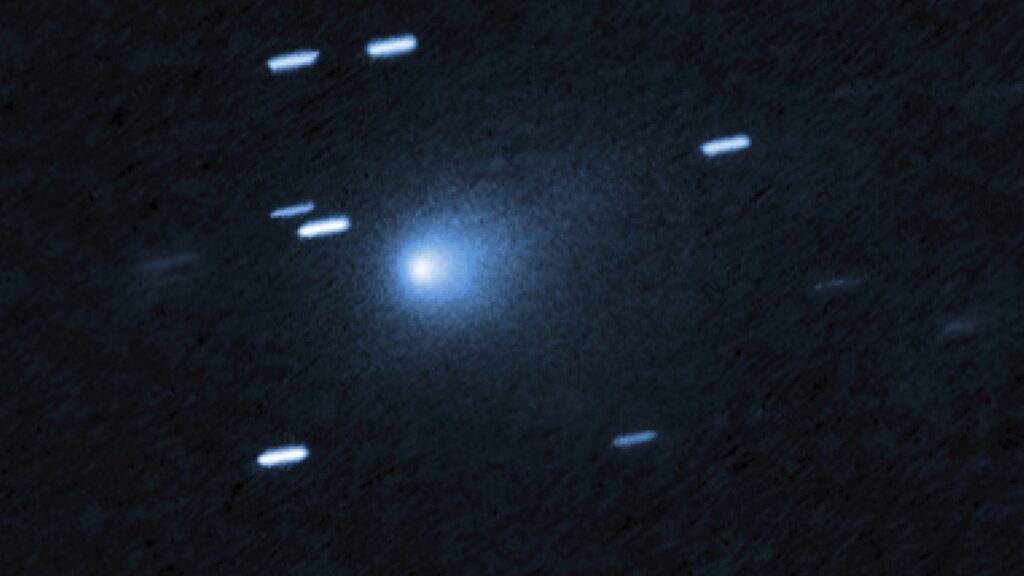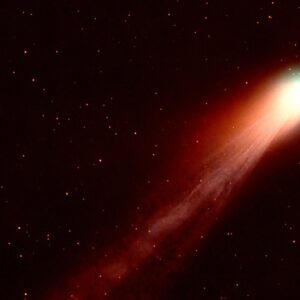In another dramatic twist in the ongoing debate over interstellar visitors, Harvard astrophysicist Avi Loeb has accused NASA of withholding high-resolution images of the mysterious interstellar comet 3I/ATLAS, reigniting public curiosity — and controversy — about whether humanity might be witnessing something more than a natural cosmic traveler.
Speaking on The Joe Rogan Experience podcast this week, Loeb claimed that NASA’s Mars Reconnaissance Orbiter (MRO) captured detailed images of the comet using its HiRISE camera on October 2, 2025, when 3I/ATLAS passed within 30 million kilometers of Mars. According to Loeb, these images could hold vital clues to understanding whether the object is artificial in origin — or a truly rare natural phenomenon from another star system.
“Amazingly, the best image was obtained on Oct. 2, 2025, when 3I/ATLAS came within 30 million kilometers of Mars,” Loeb told Rogan. “When I requested access to those data, I received no response.”
When Rogan pressed him about whether NASA was intentionally hiding information, Loeb responded wryly:
“It’s much more likely not to be related to extraterrestrial intelligence, but to terrestrial stupidity.”
So far, NASA has not confirmed or denied the existence of the alleged images. The agency has maintained its official stance that 3I/ATLAS is a natural comet, poses no threat to Earth, and continues along its expected hyperbolic trajectory.

Comet’s Unusual Behavior Raises Eyebrows
The controversy reached new heights on October 29, when 3I/ATLAS made its closest approach to the Sun, traveling at a blistering 68 kilometers per second. Some observers — influenced by Loeb’s earlier research — speculated that the comet might show signs of artificial propulsion or deviate from its predicted path.
It didn’t.
Instead, 3I/ATLAS continued on its expected trajectory. However, scientists noticed something else — a sudden and unexplained brightening of the comet as it neared the Sun. According to recent photometric data, the comet became “much brighter than any previous comet from our solar system” and appeared bluer than the Sun, an optical property that baffled astronomers.
“Why would it be bluer than the Sun?” Loeb asked during an interview with Newsmax.
Typically, comets grow redder as they approach the Sun due to dust and volatile gases. The bright blue hue of 3I/ATLAS suggests a different composition or unusual reflective surface, which has only intensified speculation about its nature.
Adding to the intrigue, Loeb’s team at Harvard’s Galileo Project identified eight anomalies about the comet — including its emission of four grams of nickel per second without detectable iron, and an anti-tail (a stream of particles pointing toward the Sun instead of away from it). These features don’t match traditional cometary physics.
Scientific Community Pushes Back
Despite Loeb’s persistence, the majority of the scientific community remains skeptical of his claims. Experts from NASA, the European Space Agency (ESA), and universities around the world assert that 3I/ATLAS behaves like a natural interstellar comet, similar to 2I/Borisov discovered in 2019.
Astrophysicist Brian Cox of the University of Manchester dismissed the alien hypothesis outright:
“Comet 3I/ATLAS is indeed a comet, composed of carbon dioxide, water ice, and various other materials. Its origin is entirely natural.”
NASA scientists have also pointed out that Loeb’s history of bold extraterrestrial claims — such as his earlier suggestion that the interstellar object ‘Oumuamua might have been alien technology — has made him a controversial figure in the astrophysics community.
Nonetheless, even critics admit that 3I/ATLAS’s unique properties warrant further study, especially its color, brightness, and gas emissions.
The Call for Transparency
Loeb argues that NASA’s silence only fuels public mistrust. He believes that releasing the HiRISE images would provide clarity and could even inspire new research directions in astrobiology and planetary defense.
“If NASA has these images, the public deserves to see them,” Loeb said. “Science should be transparent. If this object is natural, then let’s confirm it with data. If it’s something else — that’s even more exciting.”
NASA, meanwhile, insists that all cometary data from its missions are processed and released according to standard protocols, which can take time due to calibration and validation procedures.
The agency has confirmed ongoing monitoring of 3I/ATLAS as it continues its journey toward its closest Earth approach on December 19, 2025. By mid-November, the comet is expected to become visible to advanced ground-based telescopes, offering amateur astronomers a rare opportunity to witness an interstellar visitor.
A Continuing Mystery
Whether 3I/ATLAS turns out to be a natural interstellar wanderer or something more exotic, one thing is certain — it has reignited a global fascination with the unknown. Loeb’s persistence may be controversial, but it underscores a timeless truth: science advances by asking bold questions, even when the answers challenge our assumptions.
For now, the world waits for NASA’s next move — and perhaps, the release of those elusive HiRISE images.
Reference Links
- NPR – Harvard Astrophysicist Avi Loeb presses NASA for comet images
- Hindustan Times – Loeb accuses NASA of withholding key evidence
- New York Post – Harvard scientist demands NASA release interstellar comet data
- IBTimes – 3I/ATLAS comet shows strange behavior
- NASA Space News – Tracking comet 3I/ATLAS









